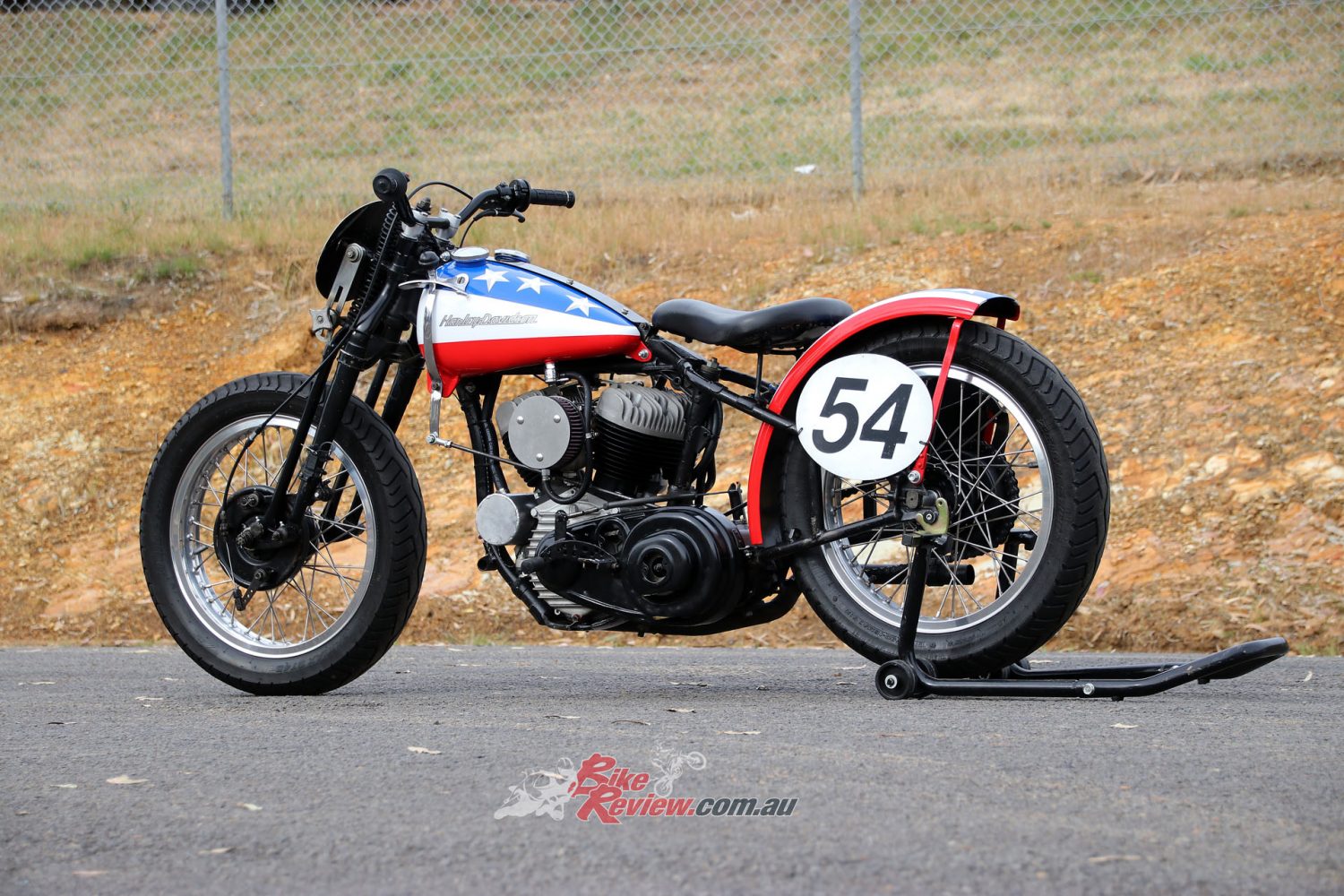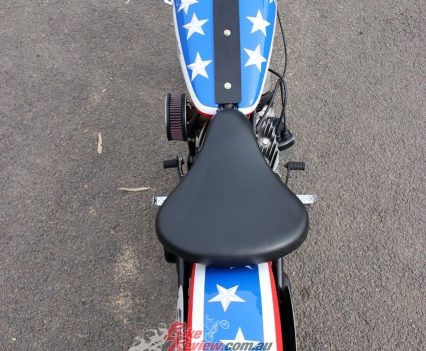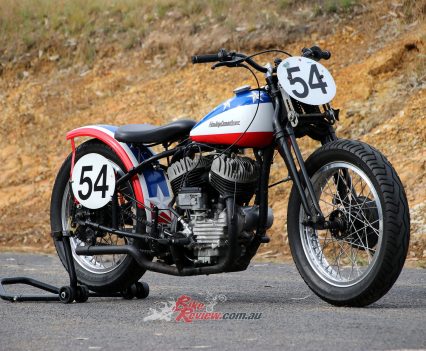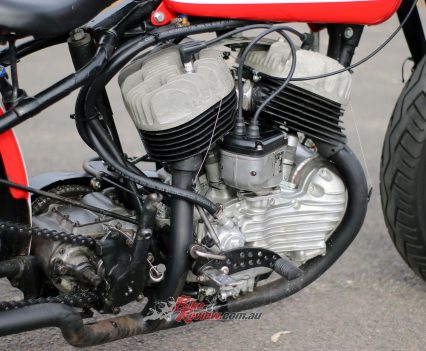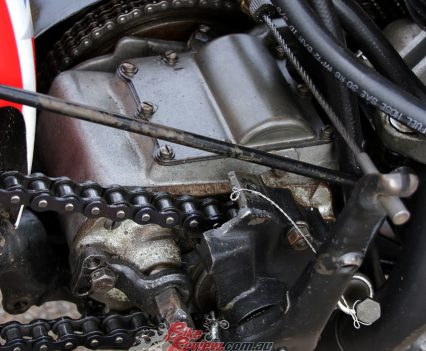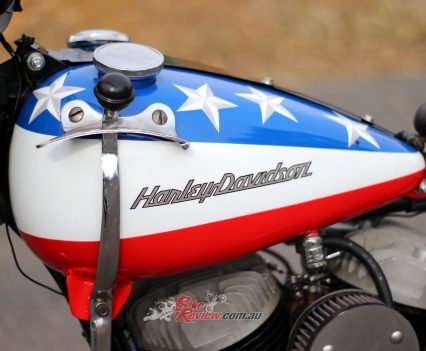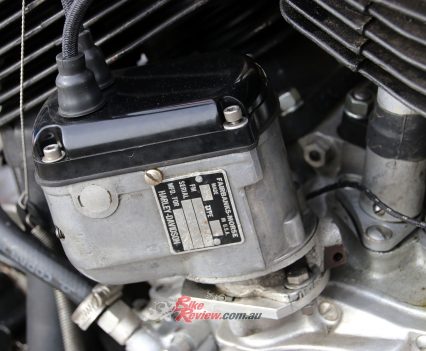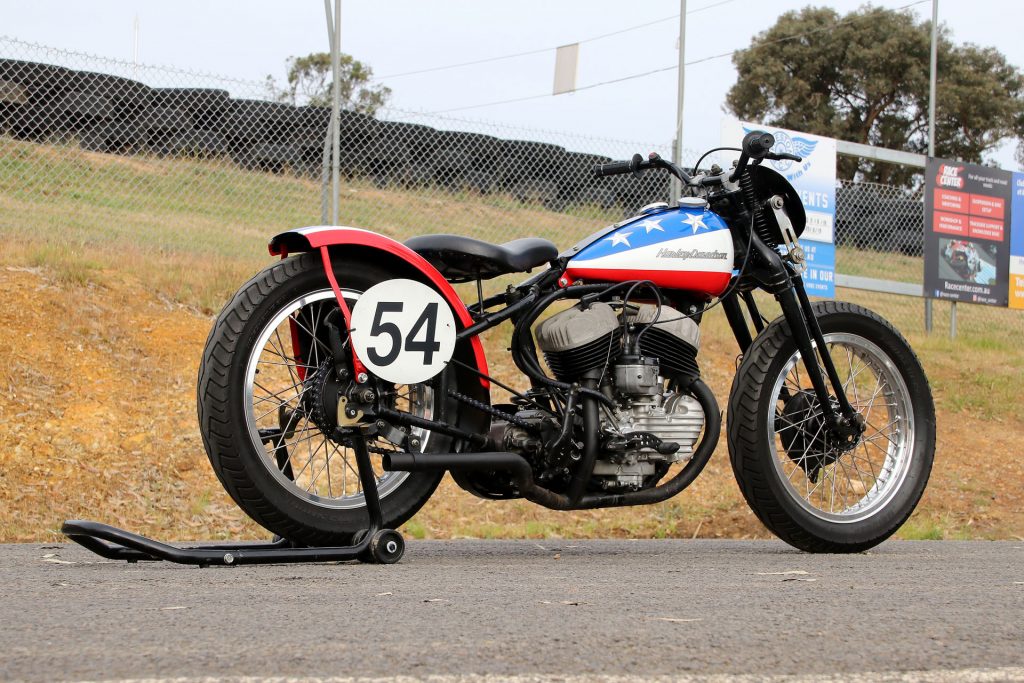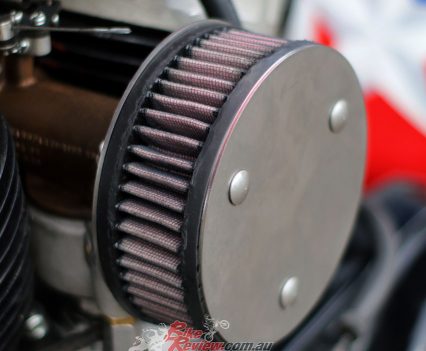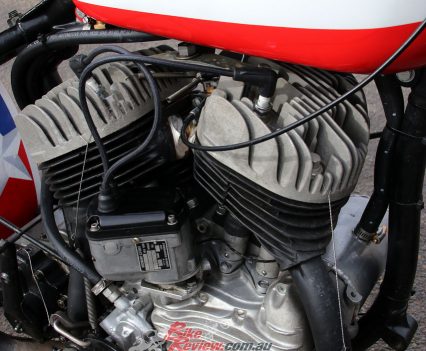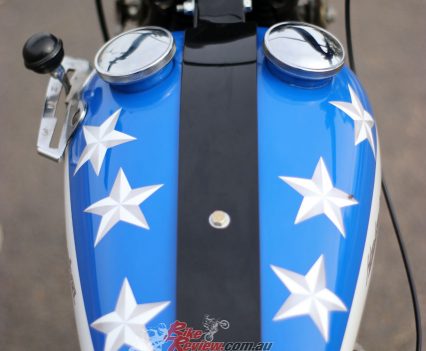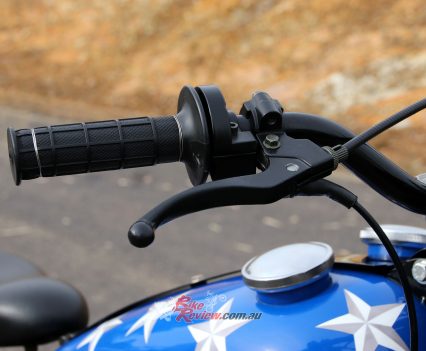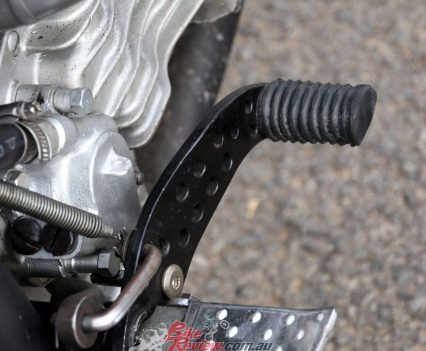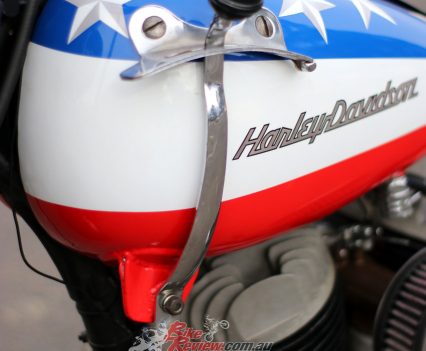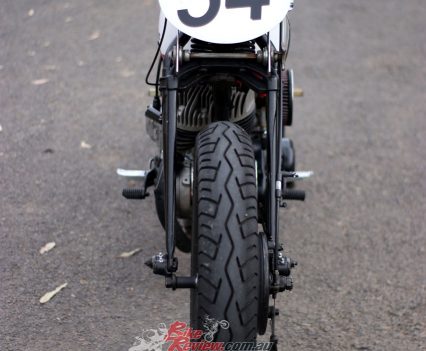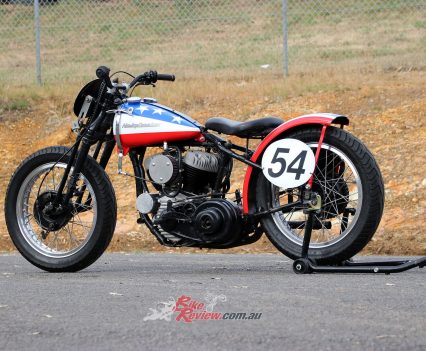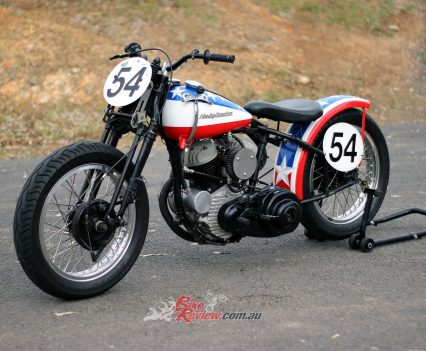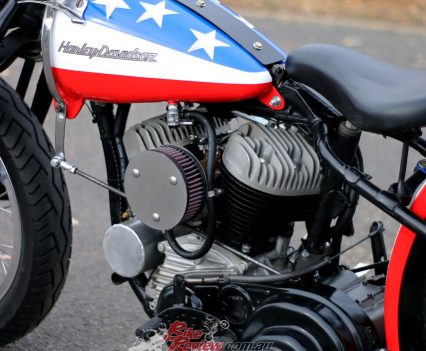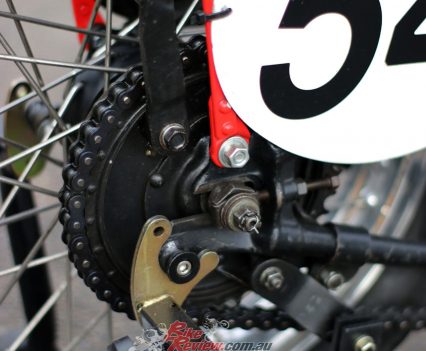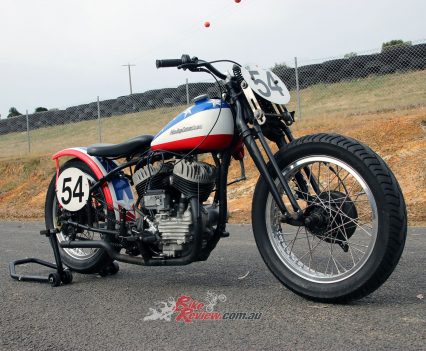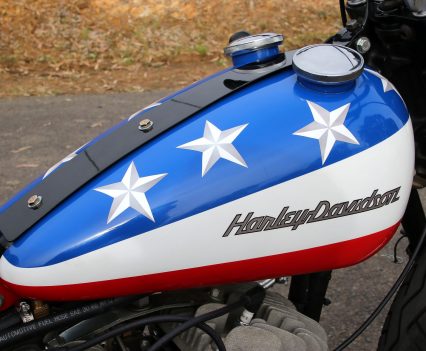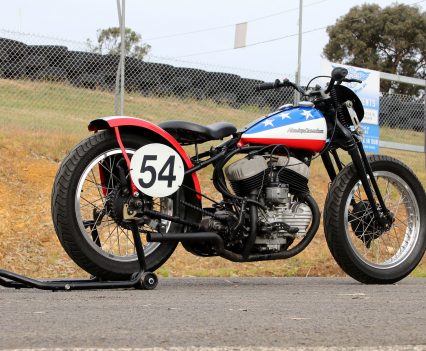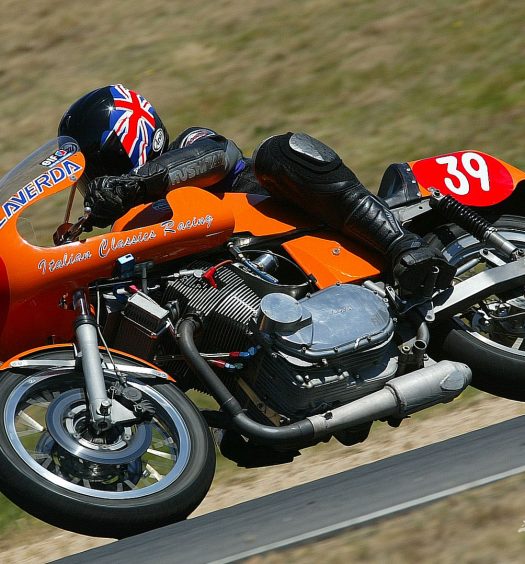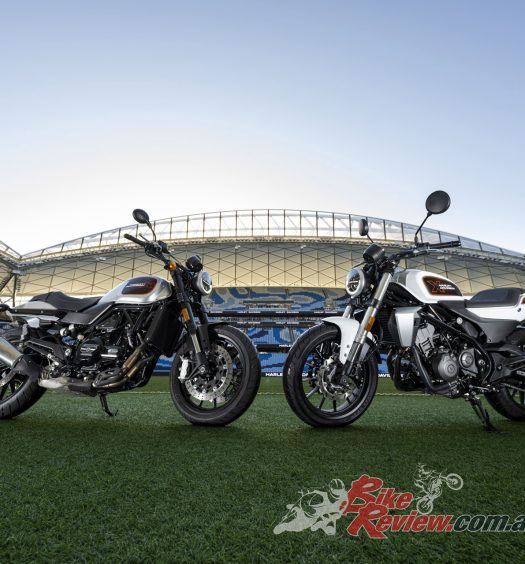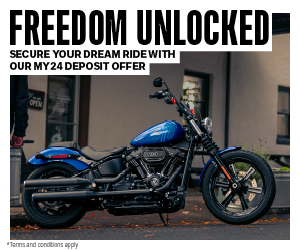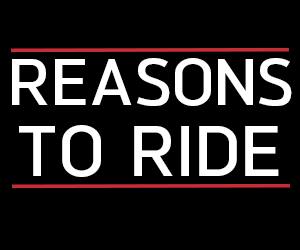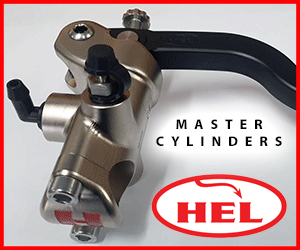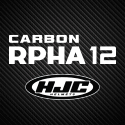Class C is one of the purest forms of classic racing, the Captain America is the perfect example of a raw and well done class C racer. Words & Photos: Knackers BDP/Paul Bailey...
The classic road racing scene in Australia has been around for decades. It has seen the highs and lows of support and competition over the years because like any motorsport, the rules evolve as time and the age of the motorcycles being raced changes.

Class C has some of the most eye catching bikes around the world, bikes that look almost out of place on a track.
One of the best and purest classes of classic road racing is the “Class C“ hand shift racing that is a sub-category of the Pre War road race category that has been around forever. Over the years Pre War racing has produced some great competition and engineering of motorcycles that were never intended to battle it out on a track.
A great example of this are the Harley and Indian 750cc side valve motorcycles racing against other brands of bikes, but also competing against 500cc overhead valve, light weight, race bikes of the period. It was all fair racing for many years and there were a great number of competitors in the Pre War racing that had the Harleys and Indians and were competing for outright victories.
There were a couple of 1200cc side valves and Knuckles that raced in the class as well and did very well over the years. By 2005 there was a movement among a few of the Harley and Indian guys, Tony Blain and Bill Bryce had an overwhelming desire to recreate the original battles between the fierce rivals of Harley-Davidson and Indian which had been at its peak back in the ’40s and early ’50s. This was the golden era for the two brands with racing in America.
The racing was different in America, with both dirt track and road racing making up the championship races for the year, riders had to be skilled in both disciplines to do well in the category. America still allowed European brands to race in the Class C races, but the Harleys and Indians dominated the class with the rules being eventually changed to just Harley and Indian racing. The formula was simple; the race bike had to be based on a production model from the company.
At first the race bikes were just that, ride it to the track, strip of the road gear and go racing. But, over the years it got more serious to the point where the factory bikes were special builds that only a handful of the top riders could get. The bikes remained 750cc side valve, hand change 3 speed gearbox, no brakes for dirt track and larger fuel tanks and oil tanks for road racing.
Class C hasn’t been made official in the Motorcycling Australia rule book but the class is widely accepted by organisers and clubs when putting a meeting together. Since 2005 there has been a thriving Class C competition here on mainly the east coast of Australia. Events over the years such as the Southern Classic, Broadford Bike Bonanza, Historical Winton, Phillip Island Classic and The Barry Sheene memorial have all had Class C racing.
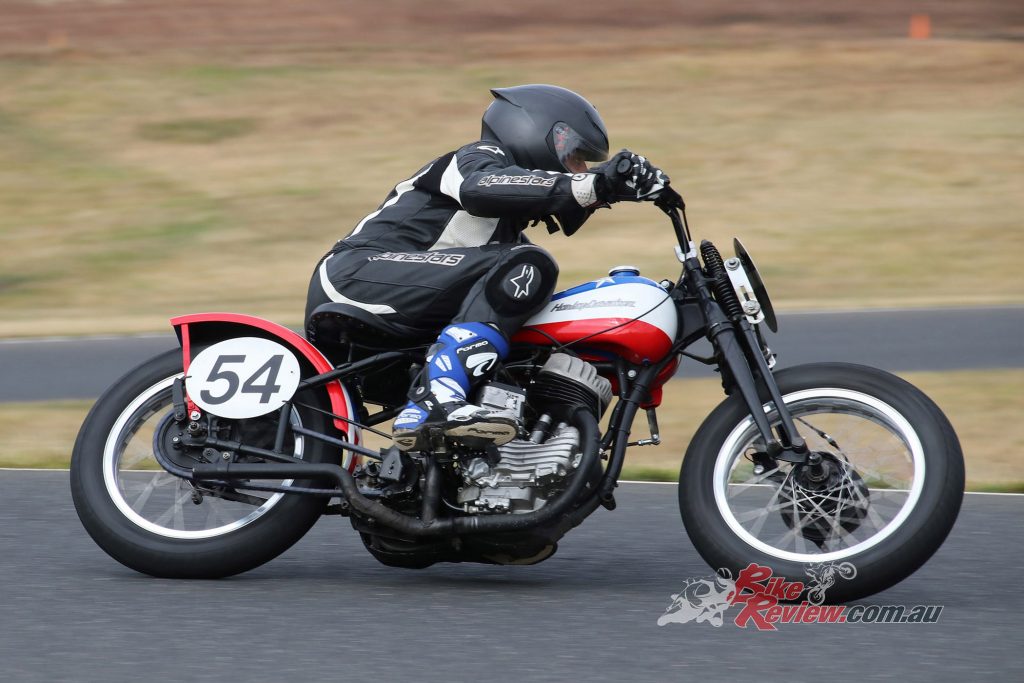
Class C has found its way into many classic events such as the Southern Classic and the Island Classic.
In 2007 a group of Australians took their Class C bikes to the world famous Daytona Bike races for the classic racing week. Because the Australian bikes followed the same rules as the American class C rules, the bikes were eligible to race at Daytona. This particular bike was one of the bikes that made the trip to Daytona for that week of racing, so it has some pedigree now as an international race bike. The history of this bike is unique, it was previously owned by Tony Blain who sadly succumbed to cancer and passed away.
Captain America was originally built by Paul Bailey back in 1995 as a Pre War race bike for Tony. Paul and Tony raced as a team for 10 years. Back then, Tonys bike had a 4 speed BSA close ratio gearbox, foot shift, hand clutch, twin Linkert carburetors and a chromoly frame cradling a highly modified WLA 750cc engine with one off grind cams. Tony changed his attitude to racing in 2004 and Paul converted the bike to the period correct class C format.
David Hoy bought the bike from Tony and made it his own with a face lift. With help from Bill Bryce, a genuine WR race motor found by David and was re-built and fitted to the bike. The WLA motor that was in the bike was passed on to David’s brother for his new race bike. The WR race engine is a special beast in many ways; the Harley race team learnt that by making the cylinders with bigger cooling fins helped with the heat issues of a side valve.
Aluminum heads were used and they cantered the side valves towards the cylinder rather than the parallel set up of the WLA which helped with the breathing of the WR motor by putting the valve head closer to the cylinder bore. But this also meant that the cases were machined differently to line the valve lifters up with the cams properly.
The cam lobes were made with a slight angle on the surface to allow the follower to run on the cam properly. This in turn meant that the cam, when trying to open the valve, would be forced toward the cam cover. To look after this, the factory engineers fitted the WR with ball bearings in the timing cover and cases to handle the side loads. The engine is much alike to glance at but they’re very different when you study the specs of a WR race engine to a WLA road motor.
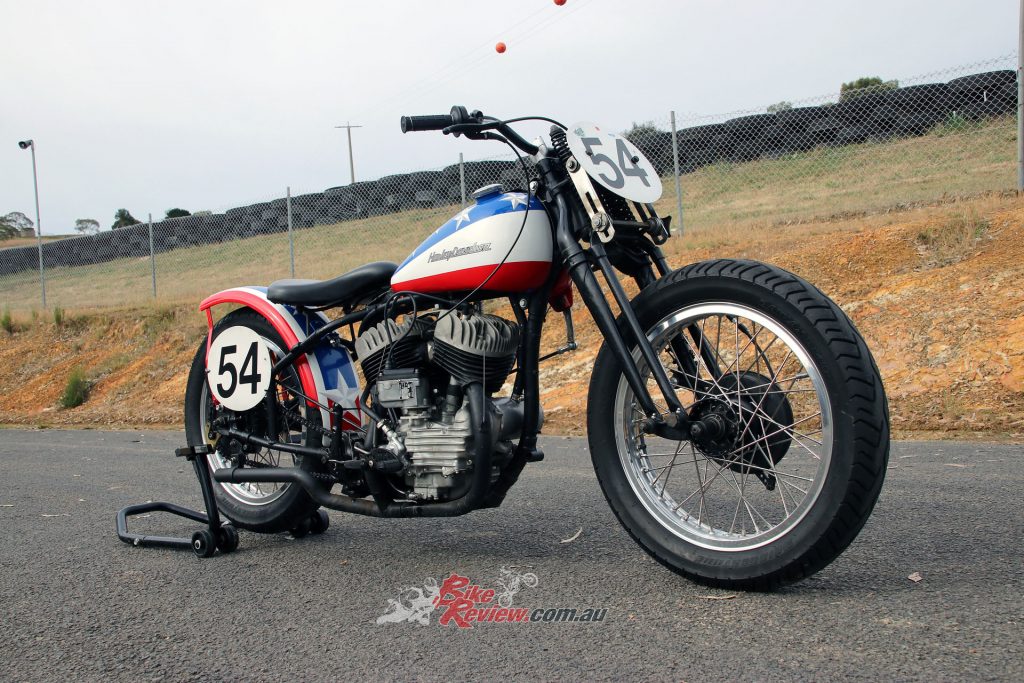
The engine is much alike to glance at but they’re very different when you study the specs of a WR race engine to a WLA road motor.
The single Linkert carburetor has a custom airfilter, with the gearbox being a close ratio three speed, a Fairbanks & Morse magneto was fitted for the spark and a two into one exhaust. The three speed hand shift and suicide clutch have all been made and fitted to suit the rider. The Front-end is Harley Davidson in the way of a 1941 Springer fitted with MX bars, rubber grips and brake lever.
The fuel and oil tanks are cut down Harley Davidson Shovelhead fuel tanks by Tatura Tinworks. The comfort factor was taken care of by the K model replica seat. It’s raced around the tracks on 18in spoked alloy rims with Bridgestone rubber. Stopping this rig are old school drums at both ends; the front is Big Twins and rear is WLA. The vibrantly visual paintwork was applied by Andrew from F Man Designs in Queensland who also hand painted the stars.
Another great addition to the fleet of historical Class C racers which looks great out on the track. The easiest way to describe this bike is that it’s a simple ride without any complexities, looks amazing and hard to miss. David is happy with the end result feeling really pumped more than ever, he is keen as ever to get back out on the tracks.
Captain America Class C Racer Gallery

